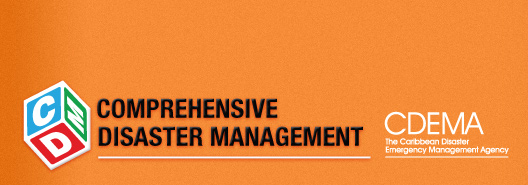
| Energy |
|
The energy sector is a fairly new development in the Caribbean. For right now, this industry focuses more or less on electricity, natural gas and crude oil. There has been some development with solar and wind energy, but this industry remains heavily dependent on fossil fuels. Energy is used to power our cars, homes and businesses and it is not something that our countries can do without. Some Caribbean islands, like Trinidad and Tobago, produce natural gas and petroleum and this is a large contributor to their economy. In the energy sector, a disaster can be both internal and external. Should something go wrong when transporting or processing petroleum, such as a leak or a spill, this is a man-made disaster. On the other hand, should an earthquake or a hurricane destroy pipelines, power lines or factories, this is a natural disaster which impacted the energy industry. Both of these are dangerous and should be prepared for. Another danger in the energy sector is the threat of climate change. Emissions from the production of petroleum as well as from the use of carbon based fuels leads to the destruction of the earth’s atmosphere. Climate change is thought to be responsible for the increase in the number of storms and droughts that have been happening recently worldwide. Disasters in the energy sector can also damage the environment which can lead to setbacks in the agriculture and tourism industry. Like any other industry, the best sort of disaster preparation is preparation and mitigation. History December 20 2004 - EGYPT- An oil slick in the Suez Canal, caused by a leak in a Kuwaiti tanker which was carrying 160,000 tonnes of crude after it collided with a dredger on December 14. The slick tripled in size in a little over a week and finally measured around 34 miles in length. Several aquatic animals and plants were threatened by the contamination, and foreign officials claimed that the Egyptian authorities had no adequate strategy to face such environmental threats and lacked means to combat them. August 13 2003- PAKISTAN- An oil tanker broke up off Pakistan's Arabian Sea port, Karachi, after spilling nearly 10,000 tonnes of oil, sparking fears of lasting damage to local marine life. The MV Tasman Spirit, which was carrying 35,000 tonnes of crude oil, split in two around 100 metres from the Karachi port after running aground on July 27. Most of the oil had pooled along Clifton beach, the favourite beach resort among Karachi's 14 million people. A thick oil slick could be seen snaking from the ship to the shores alongside the port, blackening waves and seeping onto sands. Environmentalists predicted the entire 25 mile Karachi coastline was affected, endangering fish, crabs and rare turtles. How to Protect the Energy Sector Mitigation All energy-related infrastructures in your country are developed and regularly updated. Invest in Infrastructure A country’s energy infrastructure must be reliable and strong. Reliability can be increased by investing money to build additional energy infrastructure in the country. Build Effective Relationships When preparing your business for a disaster, it may be necessary to put competitiveness aside and collaborate with other energy companies. In case of an oil spill, companies may need to pool resources in order to handle the situation.
Governments should develop plans to keep the public well informed during and after a disaster that affects a country’s energy supply or environmental safety. Avoiding panic and gaining the public’s cooperation is a vital part of any response and recovery effort.
Conduct safety drills in order to test emergency plans. It’s important to have a plan and even more important to test it before an emergency. Having a plan alone isn’t enough if it is filled with gaps and wrong assumptions. These can only be identified through regular training and exercises. Response Look at the resources you have available during a potential crisis to determine what the best steps to take are. Before you make a plan, you have to determine what kind of plan you need. Communicate with the Public Talk to the public, provide information regarding supplies and outages, explain strategies for responding to energy emergencies, and offer suggestions for how the public can reduce their energy usage. This step may require establishing a good relationship with your country’s media houses. Reduce Energy Demand Should pipelines or power lines become damaged, or should anything happen during or after a disaster that places the country’s energy supply in jeopardy, the country’s energy demand needs to be reduced. Governments may need to request that the public voluntarily reduce the consumption of energy, by turning off appliances when not in use, reducing the use of air conditioning systems etc. Recovery Governments and the private industry must work together to coordinate resupply efforts by monitoring conditions inside and outside the country. During this time, essential facilities like hospitals and clinics should always be provided for first. Assess Infrastructure After a disaster, governments and the private sector must evaluate the energy infrastructure. They must decide what can be improved upon or what can remain, in order to prevent a disaster like this from happening again. Conduct After-Action and Lessons Learned Analyses Government and the private sector should call together working groups of those affected by the energy emergency. This includes utilities,industry, energy suppliers, local officials, and the public to assess what worked well and what did not during the emergency. Now is the time to identify where improvements need to be made. Based on these conclusions, you can decide what must be done the next time there is such an emergency. |
|
Looking for:
|











